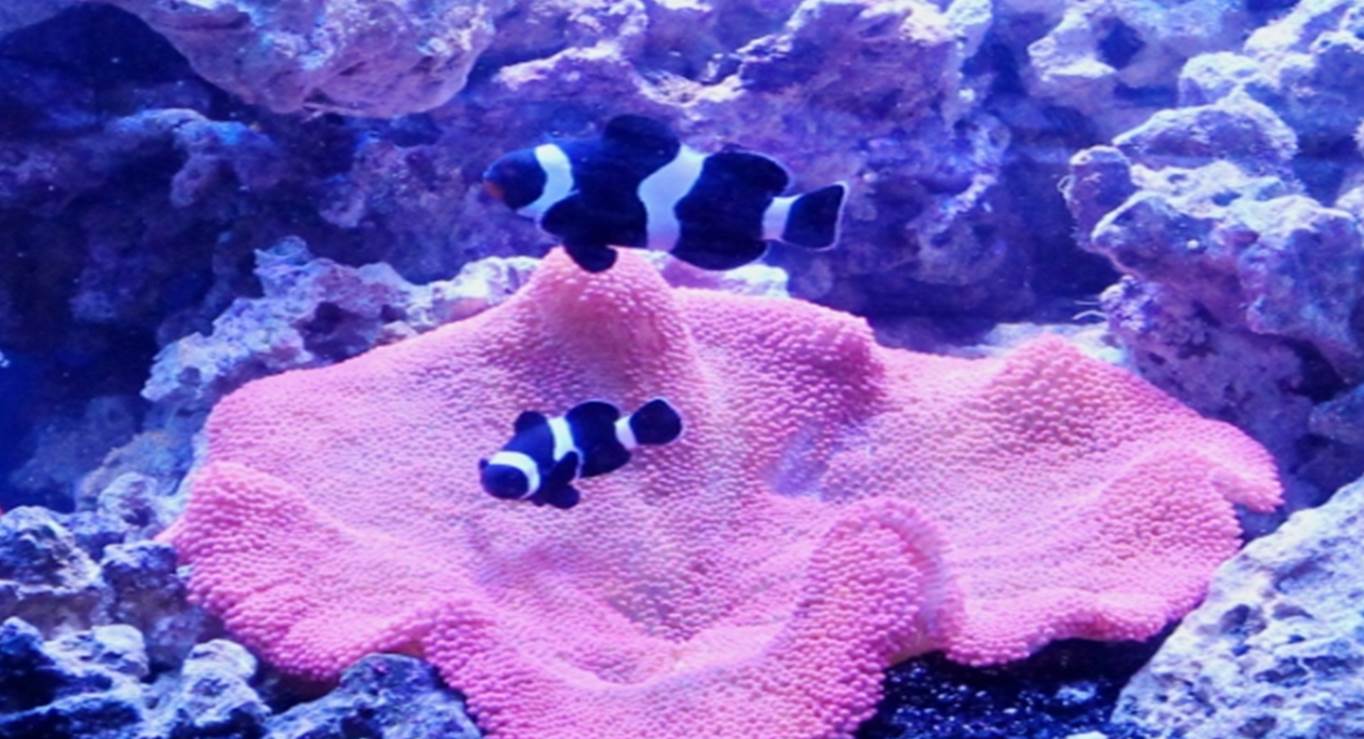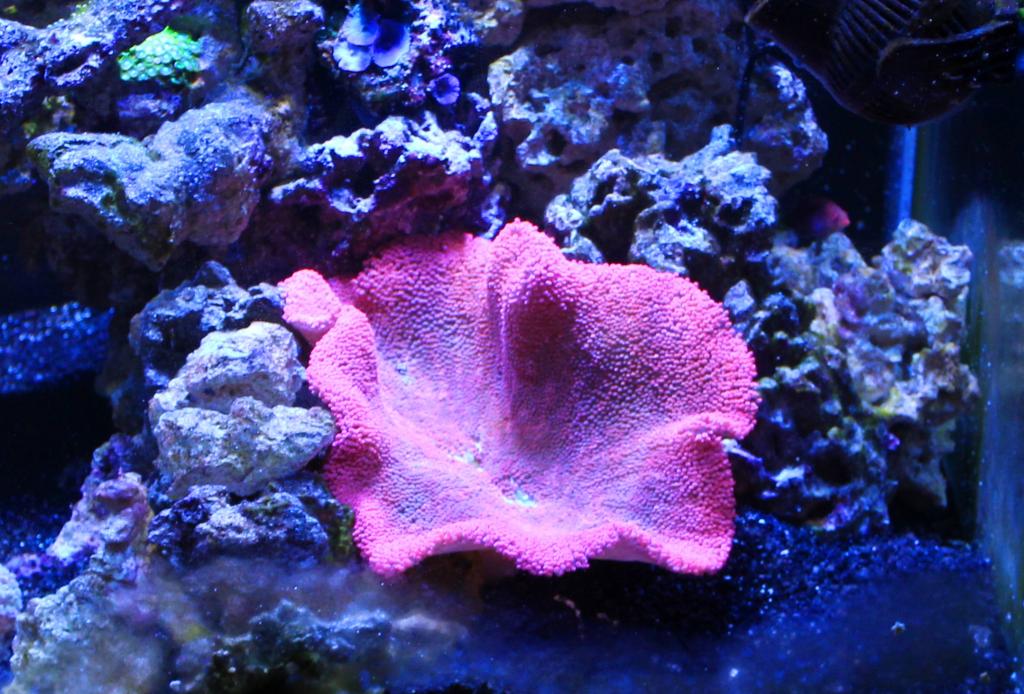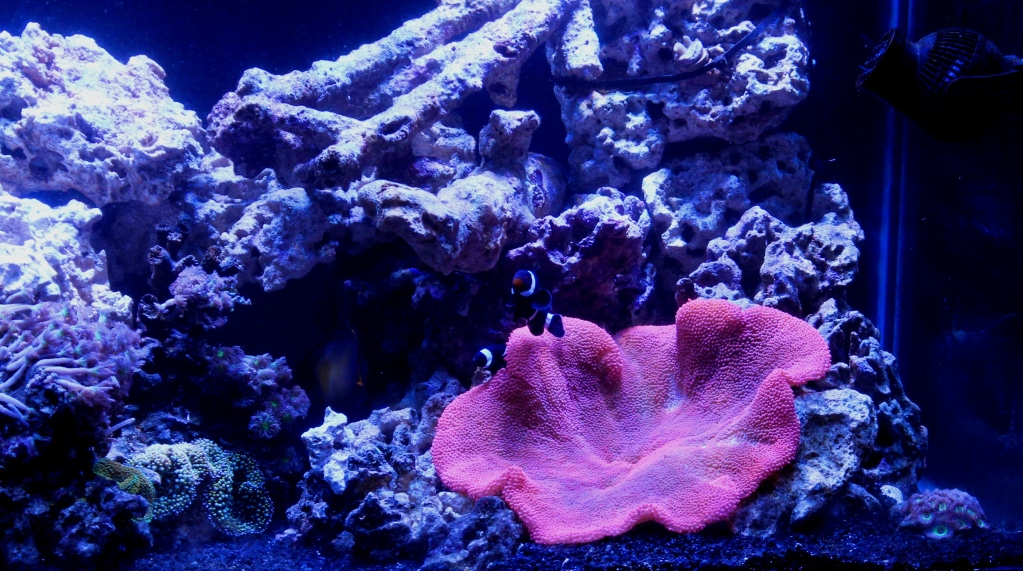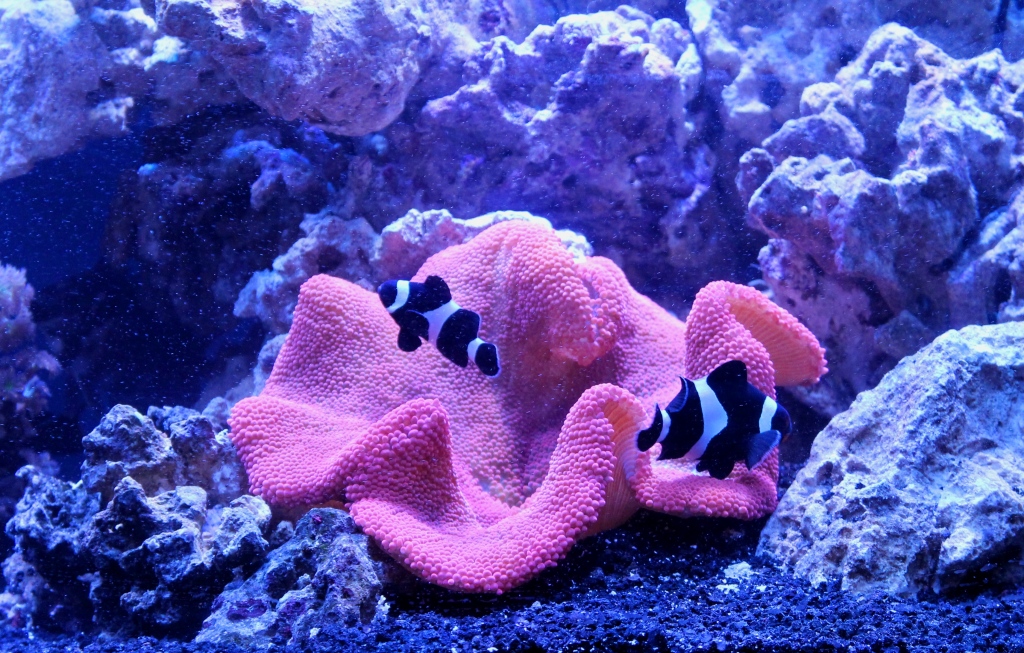
Haddoni Carpet Anemone
Common Name: Carpet Anemone, Haddoni Carpet Anemone
Scientific Name: Stichodactyla Haddoni
Reef Safe: Yes
Flow: Low to Moderate
Lighting: High
Care Level: Difficult
Max Size: Around 34 to 36 inches
Appearance:
The haddoni carpet anemone has very short and tightly packed tentacles. The haddoni carpet anemone’s tentacles look more like colored bumps rather than tentacles. I like to think of it as looking like commercial grade carpeting. Their tentacles are around ¼ to ½ inches in length which is a little smaller than the tentacles of a Gigantea anemone. Typically they will be a brown or sandy color but can have other less common colors like: green, blue, and purple. More rare colors are red and pink.



Temperament
A haddoni anemone has been known to eat varied sizes of fish and invertebrates making them one of the more aggressive eaters when compared to other anemones. For that reason, extreme care should be taken when keeping a haddoni anemone in an aquarium with other anemones. While the haddoni anemone has not been known to move, you should not have to worry about that unless there is something wrong with the water parameters. In general, carpet anemones are the least likely to move when provided a good and stable environment that meets their needs.
Environment
The haddoni anemone can get to be a little over 34 inches across which is why I would suggest a tank size of no less than 75 gallons for these anemones. However, a larger tank would make it a lot easier for you to maintain stable water parameters which is something the haddoni anemone truly needs. Haddoni anemones are very demanding and require very good and very stable conditions.
Haddoni anemones are among the more common carpet anemones available in the hobby these days. In my experience, haddoni anemones typically like to attach sink their boot into the substrate and attach their boot to the bottom pane of glass. For this reason they will need a spot on the bottom of you tank with about 4 inches of sandy substrate. They like moderate flow and high lighting conditions.
As with all anemones, they need to be placed in a very stable and matured aquarium. I would only recommend then to hobbyists who are at least somewhat experienced.
Recommended water conditions:
I would refer you to the below article for the typical water conditions that a haddoni anemone will do best in. As a very difficult invertebrate to keep, the haddoni carpet anemone will also need both very good (near perfect) and very stable water parameters for long term success.
https://www.reefaquarium.com/2013/the-basics-of-marine-aquarium-water-parameters/
Diet
While haddoni anemones can thrive under the correct level of lighting (providing all other requirements are met) they can still benefit from the occasional (or weekly) feeding made up of some meeting foods. You must be careful to offer only high quality foods as anemones (in general) can suffer from bacterial infections when offered poor quality foods. The below link can help you with that as well.
https://www.reefaquarium.com/2012/feeding-high-quality-froozen-foods/
Reproduction
It is not very common for carpet anemones to reproduce in a home aquarium, even when kept in ideal conditions. .
Fragging
In my opinion, you should not frag anemones as they are invertebrates and not corals. Although you can find information on line posted by people who claim to have successfully fragged anemones, I would encourage you to read through the below link before considering to attempt fragging an anemone.
http://www.wifeofnerd.com/images/Embryonic%20development%20of%20E.%20quad%20H.%20crisp.pdf
http://www.wifeofnerd.com/images/Broadcast%20spawning%20of%20E.%20quad%20H.%20crisp.pdf
A Word of Caution
Handle this invertebrate, and all Anemones, with care. They have the ability to sting with their tentacles. These stings can cause skin irritations or serious allergic reactions. Always wear protective rubber gloves when handling anemones
The haddoni anemone has very sticky tentacles as compared to a lot other anemones. They are just about the stickiest of all the anemones in the hobby today. Haddonis can be a very aggressive eater as it will not let go if a fish (or your hand) when/if it came in contact with the tentacles. I would almost be willing to classify these guys as aggressive eaters/predators if it wasn’t not for the fact they typically don’t move.
Clownfish
If you would like clown fish, consider the below list of some the more common clown fish that have been known to readily host in haddoni anemones.
Amphiprion ocellaris, or ocellaris clown fish (all color variations)
Amphiprion clarkia, or clarkie clown fish
Amphiprion sebae, or just sabae clown
Amphiprion Frenatus, or tomato clown
For some more detailed information about anemones in general, I would refer you to the below link
https://www.reefaquarium.com/2012/keeping-anemones/
hello cliff
first of all thanks a lot for starting this informative venture. helps a lot for beginners like me. Kudos!!
Now my question to you is, i am planning to upgrade my 48″ x 16″ x 24″ tank to 72″ x 20″ x 22″ and my sump would measure 40″ x 16″ x 16″. In my new set up i am planning to go for the Triton method which states that the refugium should be 10% of the display tank volume. Keeping in mind i am dividing my tank into foll size compartments,
Drain compartment : 4″ x 16″ x 16″ inches – water will flow from the middle (will cut a section in the middle)
Refugium compartment : 16″ x 16″ x 12″ – water will flow from top into skimmer compartment/
Skimmer compartment : 6″ x 16″ x 12″ – water will flow from bottom into the return compartment
Return compartment: 14″ x 16″ x 16″.
Kindly let me know if this division of the sump will be efficient for my set up.
Thanks
Regards
sameer
I would suggest to start with this article
https://www.reefaquarium.com/2012/some-sump-basics/
I bought a Green Haddoni Carpet Anemone was my LFS, I kept eyeing it for about 2 months, every time I went in, I kept seeing this large Haddoni Carpet, At the time I didn’t even know what it was, it was hosting a large maroon clown, I thought it was just the most beautiful thing I had ever seen, Finally I shelled out 100 bucks to buy it, like I said, it was large, My 125 gallon Reef tank was about 4 months old at the time with 55 gallon sump, It came from a reef so, they said it would make me a nice center piece, After putting it my reef and doing research for about a month on while it was there, I realized, some people were waking up one day after the carpet had done good for so long, and all their fish were gone, The Haddoni ate them, so I figured it was time to move him, I set up a 36 gallon bowfront with a sunsun canister filter, and a viparspectra light, live sand from petsmart, and 2 days later, In goes the Haddoni, that was about 6 months ago, I always thought it was healthy, but when I bought it, it was bleached and a beautiful white with just a green tint, after about 2 months, I noticed the anemone has gotten a nice dark colored green, He is just as healthy and as beautiful as he can be, and is hosting 2 ocellaris clown fish, they are very happy, Haddoni carpets are not as hard as people make them out to be, I change about 5 gallons of water a month, he does great, I had a long tentacle in with him, he is doing great too, but I just moved him into a new frag tank a month ago, he is still doing awesome, People need to just try before thinking things are way to hard, I feed mine raw shrimp (Large raw shrimp from foodlion) every 2 or 3 days, he keeps growing and getting beautiful, No 2 tanks are the same, why make it sound harder and more difficult than it needs too, it scares people away from a beautiful experience.
Well-written article. Just wanted to point out a couple typos in there. Meeting foods > meaty foods. And if > of. Just helping you to sharpen up a great read. Thanks!